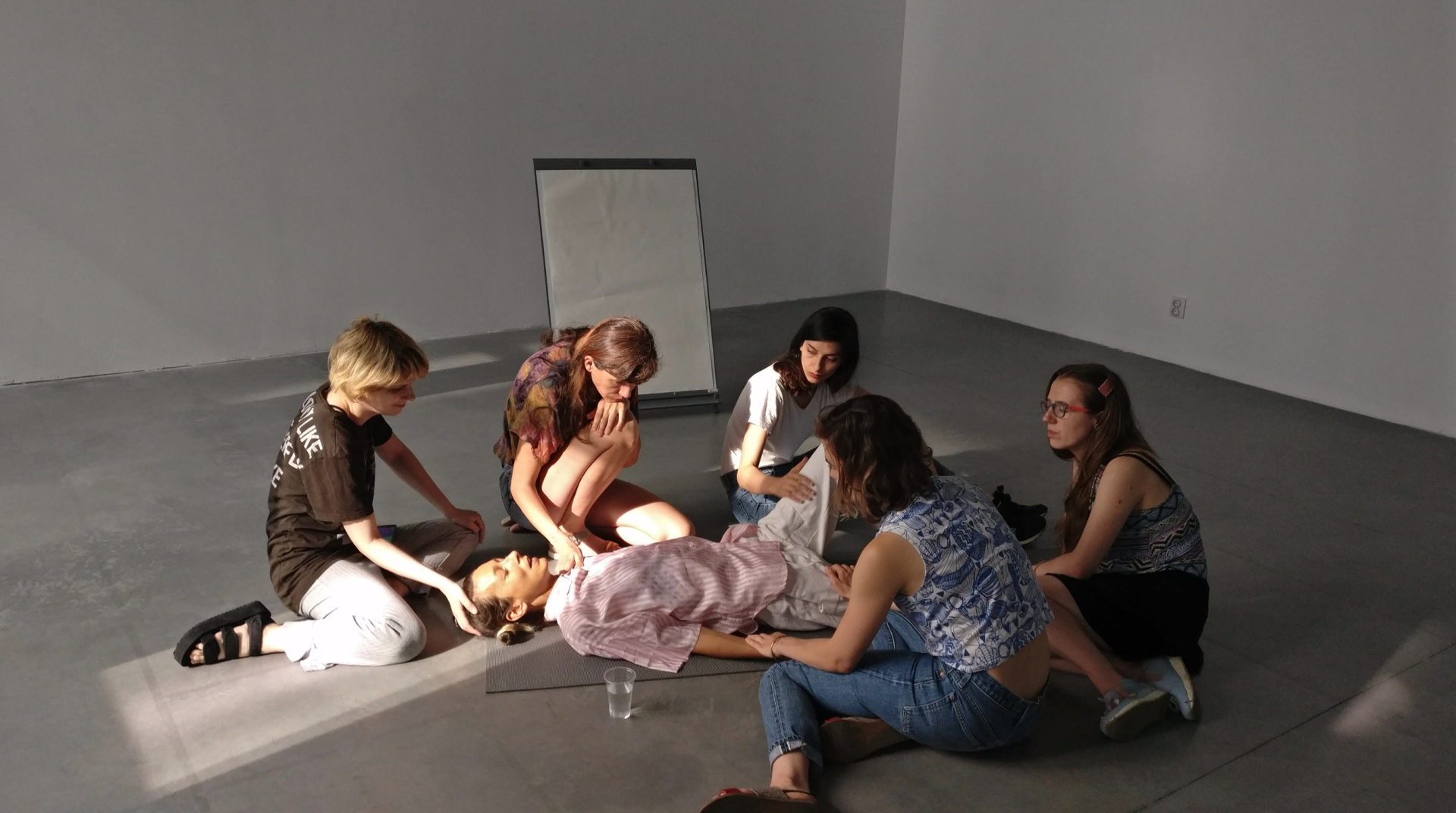Alina Popa
You Are, 2017, with found artifacts, on Ashita no Joe
📍 Venue → GHMP

Three years after her death, Alina Popa’s You Are is resurging in the exhibition economy in conjunction with anecdotes and myths from Japan’s 1970s cultural scene: the enthusiastic restaging of events from the famous manga Ashita no Joe in real life. While they may look appropriated today, the recordings of Popa’s performance with some of her tools in occupying a space are juxtaposed with the drawing of the protagonist’s final image in Ashita no Joe and found materials related to a funeral organized by Shūji Terayama for one of the fighters in the manga. These scenes show the diversity of relationships when death supersedes life as the primordial force of exhibiting aliveness. All of them fictionalize the chasms that separate life and death—conclusion and suspension—in which these artistic expressions belabor on the idea of social and affective spaces where death or life is neither mourned nor eulogized. The found audio of a hijacking incident envelops these matters, conjuring a mood beyond terror and instead about permission to perform death while alive.
You Are (objects + video documentation)
In its iteration in the Biennale, You Are is presented as a document: objects that the artist commonly utilizes in her performance and the video documentation that recorded her execution of a performance. It uses the idea of a space—social and affective—that can accommodate forms of therapy, of performance, and abstract thinking. For example, the white cube is a therapy room or a lecture hall, where contemplation meets abstraction and therapeutic touch meets conceptual distance. In this post-hospice scenario, the visitor-performer is always (a) patient, awaiting the therapeutic touch of a collective.
Ashita no Joe artifacts: A funeral staged by Ashita no Joe fans with the participation of Shuji Terayama
The 1970s cult following of the influential manga Ashita no Joe can be represented in these photographs taken during the funeral organized by the publication’s avid fans. Such bleeding of fiction into life was even more fascinating with the participation of Shūji Terayama and his avant-garde theater group Tenjō Sajiki who further dramatized the event by pushing the theatricality of death, mourning, and loss in staging boxing matches, band performances, and other rituals of aliveness.
Ashita no Joe artifacts: The last scene of Ashita no Joe featuring the protagonist Joe Yabuki
Tetsuya Chiba
The boxer Joe Yabuki is seen smiling in his final image in the popular manga series. After defeating his opponent, the protagonist, a delinquent juvenile whose life was invigorated by boxing while in prison, is illustrated colorless and lifeless. Until today, readers of the story interpret the concluding scene to be either Joe’s last smile before his death on stage or Joe overcoming his prolonged exhaustion of fighting in life. His death or continued living remains unresolved; while his smile lingers in the exhibition.
Ashita no Joe artifacts: Excerpted parts of the manifesto by the members of Red Army Faction read during the hijacking of Japan Airlines Flight 351, March 31, 1970
The narrative arc of Ashita no Joe entered the political history of Japan in a hijacking incident that declared, “We are Ashita no Joe.” The call for solidarity and unity of Japanese proletariats and all the world proletariats is central to the text titled “Declaration of Departure” written by the group’s leader Takamaro Tamiya. The invocation of Joe Yabuki, proposed by the hijackers as a representative image in which armed struggle and revolution could be realized by the masses, appoints Ashita no Joe’s iconography and historiography to be the most practical politics of the time.
Alina Popa (February 1, 1982, Ploiești – February 1, 2019) was a Romanian artist who moved between choreography, theory, and contemporary art. She was a co-founder of the Bureau of Melodramatic Research (BMR) and co-initiator of the ArtLeaks platform. Her political and artistic research centered on affect theory, the relationship between neoliberalism and melodrama, and the ideological ties between mountaineering and nationalism. Popa studied finance at the Bucharest Academy of Economic Studies (2000–2004) before studying painting, cinematography, and photography at the Hungarian University of Fine Arts, Bucharest (2003–2009). At the BMR, which she founded together with Irina Gheorghe in 2009, she researched the ways in which emotion is gendered and feminized, created work that addresses the effects of capitalism in contemporary society, and formed an online platform that aims to amplify the voices of cultural workers whose labor rights have been violated. She showed and performed at various institutions, such as MUMOK in Vienna, DEPO in Istanbul, and Martin Gropius Bau in Berlin. She lived and worked in Bucharest.